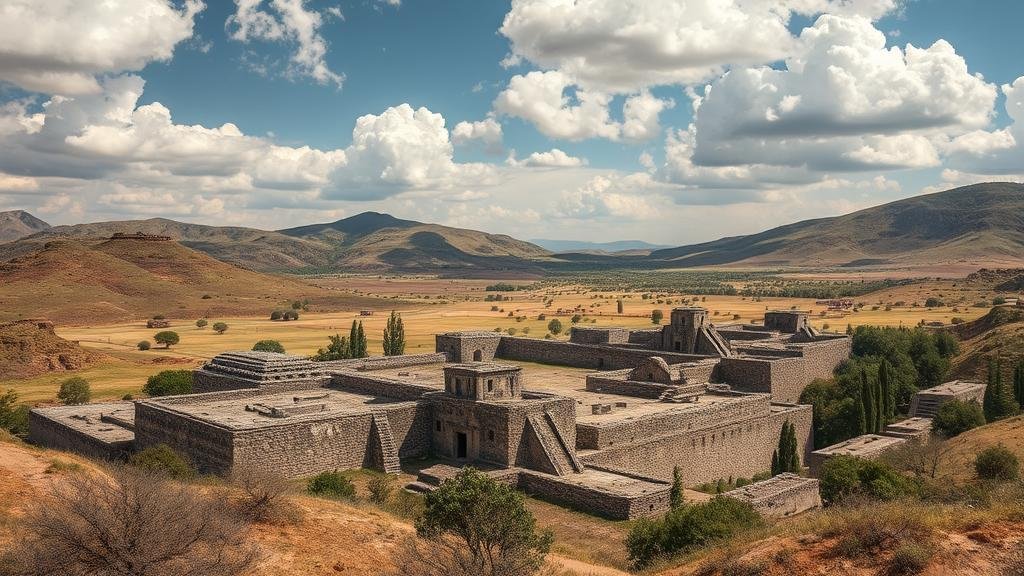Searching for pre-Aztec urban centers in Mexico’s Valley of Mexico that were abandoned centuries earlier.
Searching for Pre-Aztec Urban Centers in Mexico’s Valley of Mexico
The Valley of Mexico is historically significant for its rich tapestry of urban cultures, particularly that of the Aztecs. But, centuries before the Aztecs rose to power, several pre-Aztec urban centers flourished in this region. This article explores the search for these ancient cities, their significance, and their eventual abandonment.
Historical Context of Pre-Aztec Urbanization
The Valley of Mexico was home to various civilizations, such as the Teotihuacan, which existed between approximately 200 CE and 600 CE. This urban center was one of the largest cities in the world during its peak, with an estimated population ranging from 100,000 to 200,000 inhabitants. Archaeological findings suggest that this city played a crucial role in trade, culture, and politics across Mesoamerica.
Following Teotihuacans decline, which scholars date to the early 8th century, other urban centers continued to emerge but faced similar fates of decline and abandonment over centuries. The search for these centers provides vital insights into societal development, environmental challenges, and the dynamic history of human settlement in the region.
Significant Pre-Aztec Centers
Several key urban centers existed in the Valley of Mexico prior to the rise of the Aztecs. Some notable examples include:
- Teotihuacan: This monumental city is characterized by its iconic pyramids, such as the Pyramid of the Sun and the Pyramid of the Moon. It served as a cultural and economic nexus from 100 CE onwards.
- Tula: Located to the north of Mexico City, Tula was inhabited around 800 CE and is known for the impressive Toltec sculptures and architectural styles that influenced later cultures, including the Aztecs.
- Cuicuilco: Situated in the southern part of the Valley of Mexico, Cuicuilco features a unique circular pyramid. It thrived between 150 BCE and 100 CE before volcanic activity caused its decline.
Reasons for Abandonment
The abandonment of these urban centers can be attributed to several factors, including:
- Environmental Changes: Factors such as volcanic activity, as seen in the case of Cuicuilco, or catastrophic climate shifts could have made the surrounding areas less hospitable.
- Resource Depletion: Overpopulation and agricultural practices may have led to soil exhaustion and water scarcity, prompting communities to migrate.
- Social and Political Factors: Internal conflict or external invasions could disrupt the societal fabric, leading to the collapse of urban centers.
Archaeological Findings and Ongoing Research
Archaeological efforts have intensified in the Valley of Mexico to uncover the ruins of these pre-Aztec civilizations. Methods such as ground-penetrating radar and aerial surveys have revealed hidden structures beneath the soil. Notably, in 2017, researchers discovered an extensive ancient city near the Teotihuacan basin, providing evidence of a vast interconnected network of urban sites.
Current research emphasizes interdisciplinary approaches, combining anthropology, geology, and historical documentation to build a more comprehensive understanding of these urban centers and their inhabitants’ lives.
Cultural Significance and Legacy
The legacy of these pre-Aztec urban centers is profound. Their sophisticated societal structures, agricultural innovations, and artistic expressions heavily influenced subsequent civilizations, including the Aztecs. Artifacts, such as pottery, tools, and murals, provide rich insights into their cultural practices, daily life, and belief systems.
The persistent intrigue surrounding these urban centers underscores the necessity for further research, which illuminates our understanding of human civilizations evolution in Mesoamerica.
Actionable Takeaways
For those interested in this captivating subject, consider these steps:
- Explore archaeological reports and journals that focus on Mesoamerican studies for up-to-date findings.
- Engage with local museums and cultural heritage programs to learn about exhibits on pre-Aztec civilizations.
- Plan visits to known archaeological sites in the Valley of Mexico, such as Teotihuacan and Tula, to witness the remnants of these ancient urban centers firsthand.
As archaeological techniques continue to evolve, the search for pre-Aztec urban centers will undoubtedly unveil further insights into the complex history of the Valley of Mexico.



